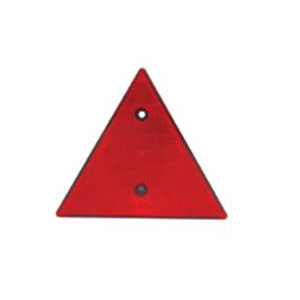
More color screens - more options! Using the built-in translucent screen, you can cast weak reflections or diffuse and soften the strong noonday sunlight by holding the reflector over your subject's head. Having five colored reflectors (translucent, black-silver, and white-gold) and one frame give you five lighting options whiles also eliminating the need to lug multiple frames. By default, the outer shell of this screen offers a black and silver sides, but if you take it off, turn inside out, and then put back on, it gives you a golden and a white sides. With frame deployed, this zippered sleeve screen can be pulled over the frame and zippered to stay on. The triangular shape ofthe frame can be a more convenient choice in tight spaces or when a straight edge is needed. This kit features a single frame with a built-in translucent screen and a four-color, pull-on sleeve screen. Not too necessary here in England where we should always travel with a panel to protect subjects from the rain!įor every problem which presents itself in the world of photography, there is an answer albeit usually expensive! However, reflectors offer massive benefits in exchange for a very small (and sometimes free) expense.Add versatility to your location or studio gear and save precious space with the 30" Glow 5-in-1 Collapsible Triangle Reflector. I imagine these would be a must for wedding photographers who are forced to shoot outside, especially if you live in bright places like my native Florida. You can even get huge translucent panels on stands under which you can place your subjects. These include black reflectors which do the opposite of reflect – they absorb stray light and translucent panels which can be used above the subject to diffuse harsh sunlight (much like a convenient film of clouds over the sun). In the reflector family, there are other items used to manipulate the light. And if you don’t want to pay an assistant to stand and hold your reflector, Interfit makes really cheap and handy stands to hold them for you! Lastolite makes a triangular reflector with a comfortable grip handle which (in theory) could be held by the photographer him/herself if necessary. Reflectors which you purchase come in a wide range of sizes and effects.

Reflectors also produce flattering catchlights.

#TRIANGULAR REFLECTOR PHOTOGRAPHY SKIN#

I explained that available light means you only use the light which is naturally available and he replied, “yeah, but I have a flash so it’s available.” Fair enough as photographer Eugene Smith is famously quoted as having said that available light is “any damn light that’s available”. So let’s just define what this traditionally means. I once had a photographer tell me he ‘only shoots available’ yet ‘always uses a flash’. The result is a subject beautifully lit by the sun from both the front and the back. To combat the subject being a back-lit silhouette, you can use reflectors to fill in and aim the light where you want.

As we read recently in Veronique da Silva’s post on available light photography, we can get stunning results when we position models back-to-the-sun and place ourselves facing the sun. They are used to aim light into the dark spots on a subject to fill them with light and diffuse unwanted shadows. Reflectors do exactly what they say on the box: reflect light.
#TRIANGULAR REFLECTOR PHOTOGRAPHY HOW TO#
Reflectors are an amazing, versatile and cheap solution to most natural light photography problems and also have their place in the studio although here, I’m going to stick to information on how to use reflectors in natural, available-light photography. Note to self: tin foil does NOT make a good reflector unless your subject is blind or wants to be.Īaaah the magical power of reflectors. A Novel Use for Reflectors (Image by mamma tang)


 0 kommentar(er)
0 kommentar(er)
